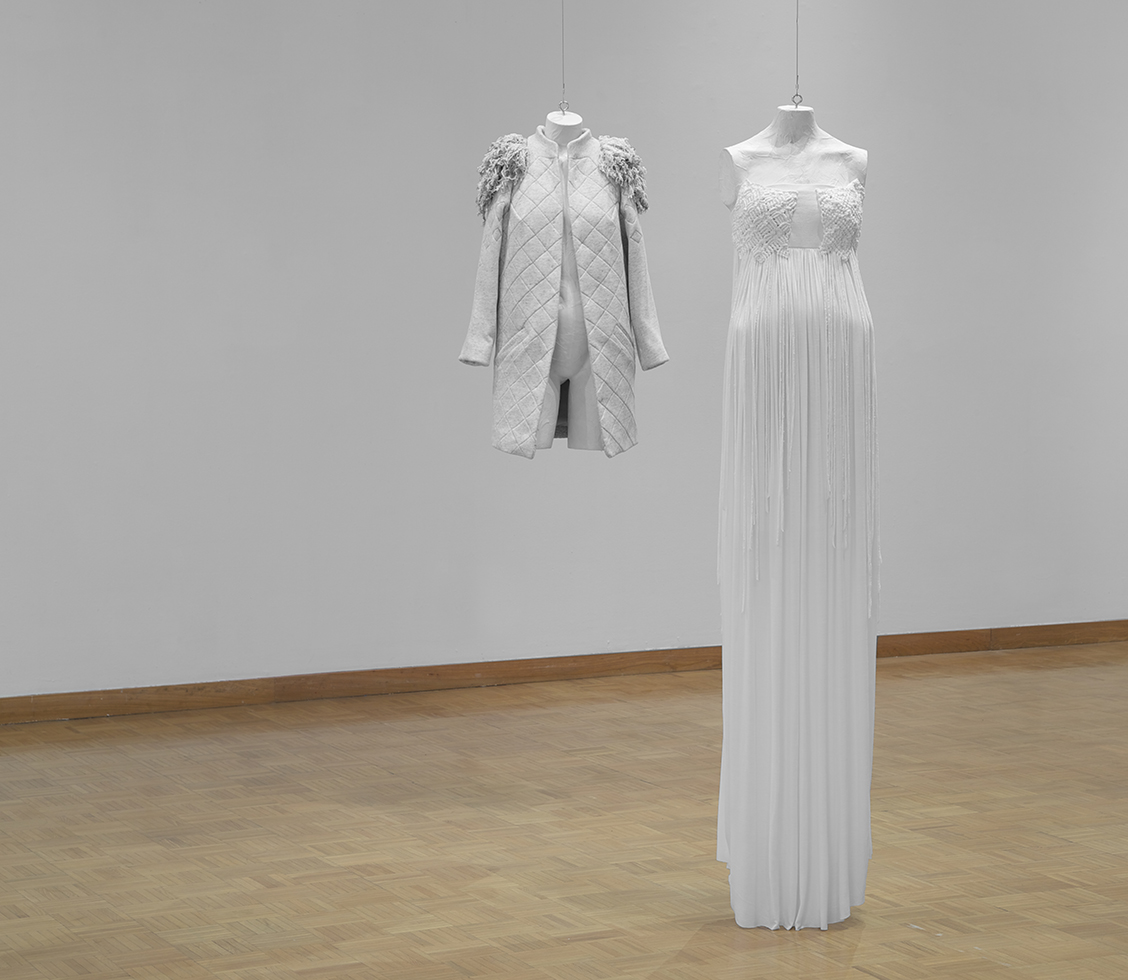Cayetano Talavera
Fashion and Textile Major


R3generation
18” x 38” x 34”, 17.5” x 11” x 84”
Fleece, crepes, jerseys, interlocks, thermals, and novelty knits from test swatches
STATEMENT
The transformation of a sketch on paper to a garment has always intrigued me. There is something fascinating about the way fabric begins to take form and embodies character through stitching. My designs tend to be romantic, an escape from the reality of life. I pay great attention to detail and like to create focus on specific places on the garment. Though my work might vary in themes and materials, the attention to precision is constant. The focus of this project is the environment and an approach to solving the problem of large textile waste in our landfills. The fabric used to create the garments featured are color-and-finish, knit test swatches that get discarded after meeting specifications and approval for production. In essence, I have regenerated an evening gown and coat out of scraps. This project challenged me to create elegant pieces out of textile material that would have been sentenced to the landfill. I have combined both my fashion and textile design skills in the construction of these pieces. Textile techniques such as weaving and macramé were used. In order to weave at such scale, a frame loom (3.5’ x 5.5’) was constructed out of recycled wood.
SOLUTION
Although much of the textile production happens overseas, the Los Angeles area still houses local mills. The textile industry uses large amounts of water when dyeing and their production process emits gases. During the dyeing process they use heat boilers for color, prints, and finishes. Natural gases are used to bring the dyes to the high temperatures needed to permanently penetrate the fabric, and eventually emitting greenhouse gas (GHG) in the process. GHG has an effect on the temperature of the Earth, which leads to climate change. On the other side of the spectrum, manufactured textiles are also causing problems. According to the Council for Textile Recycling, the U.S. generates 21 billion pounds of textiles waste per year, and this includes clothing, footwear, accessories, towels, and bedding. Not only should we be conscious of what we are producing but also of we already have. The U.S. sets strict laws governing both water and air quality, and organizations are trying to clean up the waste. But are we doing enough?
